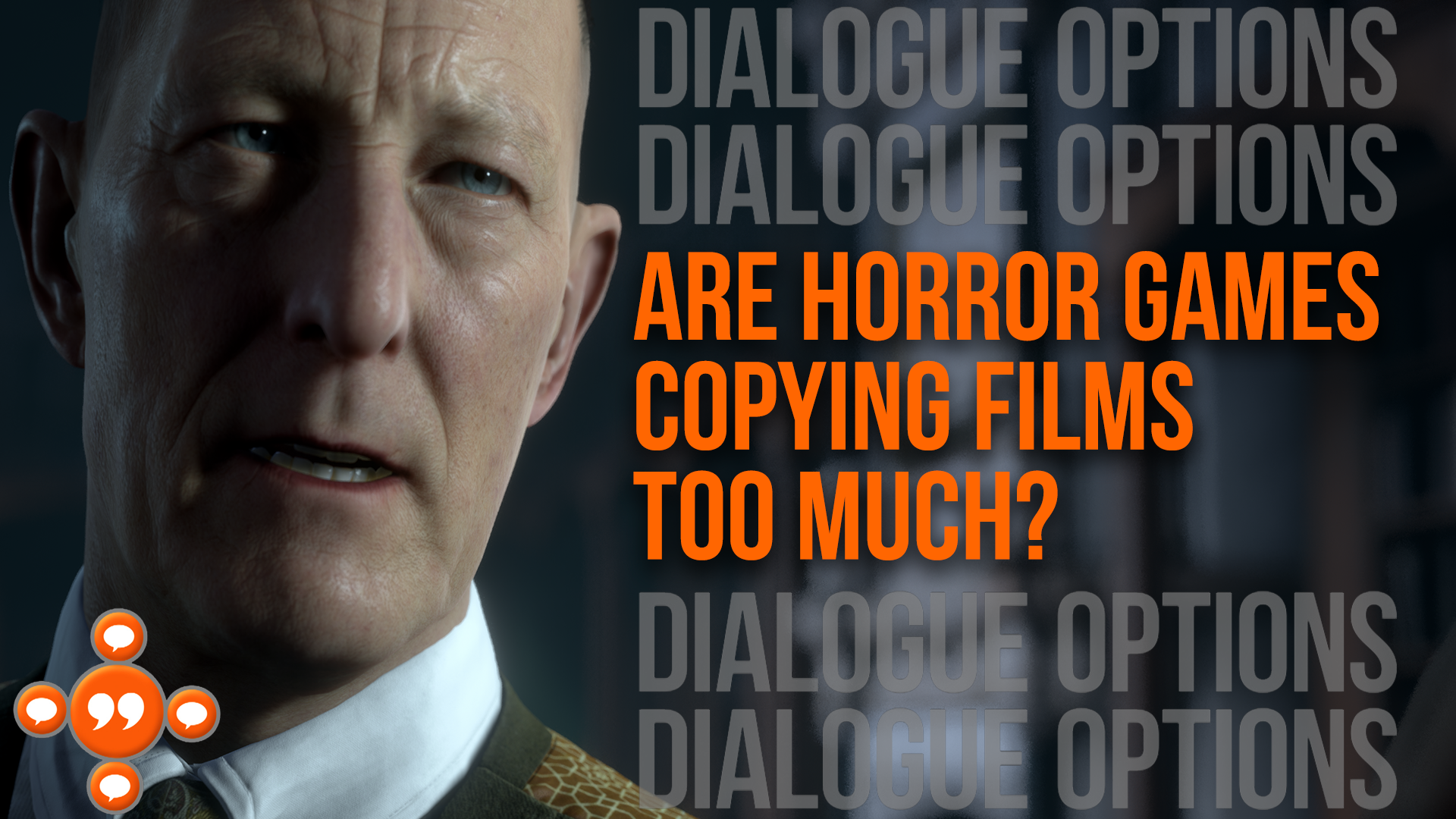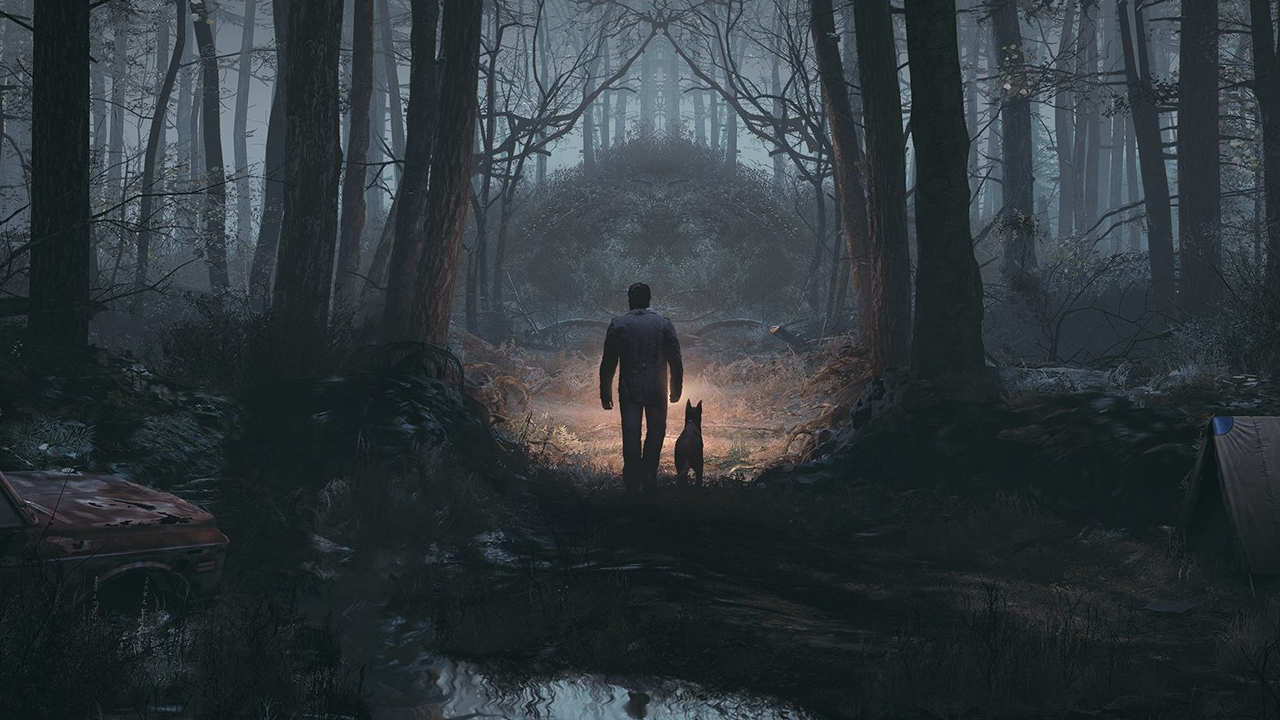Dialogue Options: Should horror games stop copying films so much and do more that only a game can do?
This week Dialogue Options wonders if horror games should do their own thing more often

This week in our weekly show Dialogue Options, we’re going to be talking about whether horror games need to stop copying films so much and try to play more to their own unique gaming strengths. Video games are a media that can physically do so much more than a movie, so why don't they?
Now, don’t get me wrong, horror games are great. And by that I mean they’re horrible which is why they’re great. Nothing makes you feel more alive than being scared half to death, but are games really doing enough to go beyond the film scares they often carefully reproduce? It’s been 23 years since that dog first jumped through the window in Resident Evil. Nearly two decades on; we’re still jumping at loud noises.

Now I get it: horror movies provide a clear template - those on-screen warning signs are as much a guide and promise to the viewer as they are a threat of danger to the characters. A good jump scare is a thing of horrible beauty but games can do so much more. Look at something like Layers of Fear, a horror game with no obvious monster and that largely involves wandering an empty house getting a bit lost. It’s also terrifying because of the way it changes the space around you - making walls and doors disappear, or move when you’re not looking, and creating such a sense of unease and distrust with your own mental state that it affects you in the real world, not just character you are playing. You start to question yourself. Films can’t do that. They can confuse and surprise you, but it’s a passive experience. Layers of Fear’s ability to reach through the screen and make you doubt yourself is the perfect example of how to push beyond the traditional horror film ideas.

Which makes something like the Blair Witch game exciting. It’s also by Layers of Fear’s developer, Bloober Team and a perfect chance to demonstrate a fusion of movie inspirations and gaming progression - building on the film’s scares and mythology, using techniques and ideas that can only be explored through gameplay. There are hints of Layers of Fear’s ability to make things disappear and move just out of sight, for example, but one of the most interesting ideas is how it uses the video tapes at the heart of the story. The Blair Witch legend is obviously built from a found footage narrative, watching the tapes left behind by the missing victims tell its story. In the game however you can use those tapes to change the narrative - by rewinding and fast forwarding videos you find in the forest you can change things around you. So, for example, if you can’t get through a door you can watch a tape and find a point where someone opened it, and see that reflected in the real world. It’s a fascinating mechanic because it takes what you know and understand about the franchise and adds a new dimension that only a game could do. You can both experience and change the story at the same time.

Another great example of progressing the horror experience though gameplay is Man of Medan. SuperMassive’s choose-your-own-adventure ghost story lets two people play a single player story. Sometimes you play together, relying on each other to stay alive, but you can also split up, experiencing events differently. It’s a brilliant idea because one player will often see and know things the other doesn’t and, without realising, make different decisions in the same situation as a result. It’s one thing to shout at film because you don’t like what someone’s doing, but what about when it’s your friend and you have no idea why they’re opening that door. The Friday the 13th game takes that multiplayer idea that one step further by making all the usual characters in the traditional horror movie set up playable. Where the film categorises the killer and victims into clear tropes, a multiplayer experience creates an equal chance that a player could be Jason Voorhees, or a potential victim. Putting people physically in the position of having to make the fight or flight decisions they see on screen completely subverts the experience. Everyone thinks they’re the hero, not the victim. So how does that play out in a six player game where only one person gets to hold the machete.

Horror games are obviously already scary. Even using exactly the same ideas as cinema they are inherently more terrifying to play than watch because it’s interactive. It’s YOU walking down the spooky corridor, opening the bad door and coming face to face with your own bad decisions. They let you safely chase that heart-in-your-mouth gasp of terror that in real life would probably leave little more than an unlaced shoe in a bush and some posters with your face on. Horror games should try to take that potential even further, though, and investigate ways to scare that aren’t just derived from the screen. Games aren’t bound by boring real life constraints like coherent geometry or chronological time and they should embrace that fully. Kojima’s Silent Hills Playable Teaser, PT, was only a demo and is still one of the greatest horror games of the generation thanks to a looping and repetitive experimental structure that made you question yourself as much as the story.
But while we’ll likely, frustratingly, never see where Kojima could have taken horror, that, along with things we’re starting to see in games like Layers of Fear or Man of Medan, suggest developers are starting to look beyond the big screen for ideas. But what do you think? Are you happy with playable horror films, or do you want to be scared by something only a game could do? What are the biggest scares you’ve experienced in horror games?
Weekly digests, tales from the communities you love, and more
Let me know in the comments below and don’t make it too horrific. It’s scary enough down there as it is.

I'm GamesRadar's Managing Editor for guides, which means I run GamesRadar's guides and tips content. I also write reviews, previews and features, largely about horror, action adventure, FPS and open world games. I previously worked on Kotaku, and the Official PlayStation Magazine and website.


